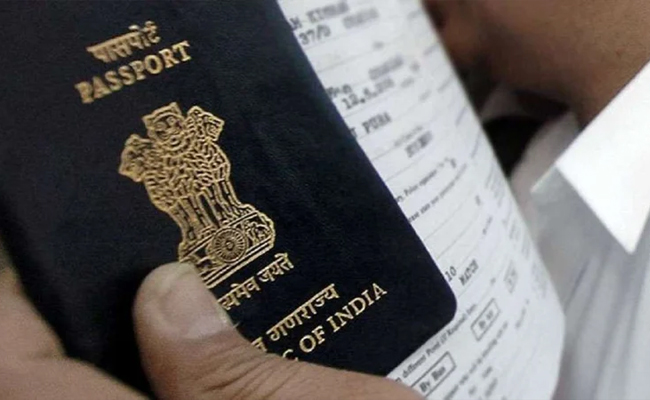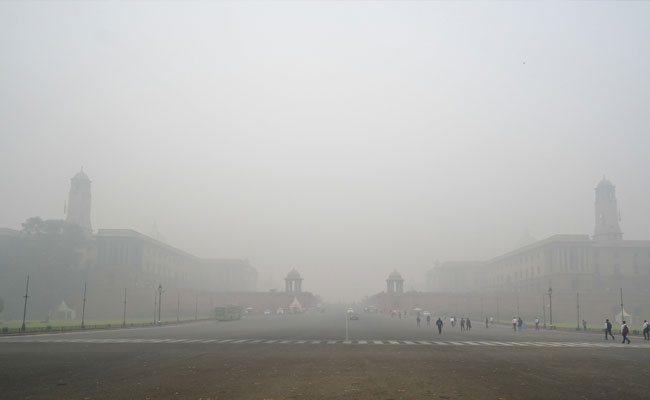New Delhi (PTI): India's ranking has dropped by five points to 85 this year in a global passport index, topped by Singapore for the second consecutive year.
The data draws from Henley Passport Index released by citizenship advisory firm Henley & Partners on Wednesday.
"With historical data spanning 19 years, the Henley Passport Index is the only one of its kind based on exclusive data from the International Air Transport Authority (IATA). The index includes 199 different passports and 227 different travel destinations," according to its website.
The index is considered the standard reference tool for global citizens and sovereign states when assessing where a passport ranks on the global mobility spectrum, it said.
As per the index for 2025, India stands at 85th while the ranking of Pakistan and Bangladesh stood at 103rd (101st in 2024) and 100th (97th in 2024), respectively.
India's ranking in the Henley Passport Index for 2024 was 80th globally.
According to a data chart available on the firm's website, for the range of years from 2006-2025, India's rank was the lowest at 90th in 2021, while its best score was in 2006 when the country was ranked 71st.
For the US, the ranking for 2025 was 9th, down from 7th in 2024, while China's ranking rose to 60th from 62nd in 2024.
Japan's ranking stood at 2nd this year, while it had the top slot from 2018-2023. In 2024, both Japan and Singapore shared the top rank.
According to a statement issued by the firm, only 22 of the world's 199 passports have fallen down the Henley Passport Index ranking over the past decade.
"Surprisingly, the US is the second-biggest faller between 2015 and 2025 after Venezuela, plummeting seven places from 2nd to its current 9th position. Vanuatu is the third-biggest faller, losing six places from 48th to 54th position, followed by the British passport, which was top of the index in 2015 but now sits in 5th place. Completing the top 5 losers list is Canada, which dropped three ranks over the past decade from 4th to its current 7th place," the statement said.
In contrast, China is among the biggest climbers over the past decade, ascending from 94th place in 2015 to 60th in 2025, with its visa-free score increasing by 40 destinations in that time, it said.
The US nationals currently constitute the single largest cohort of applicants for alternative residence and citizenship, accounting for a staggering 21 per cent of all investment migration programme applications received by Henley & Partners in 2024, the statement said.
The firm has more American clients than the next four biggest nationalities -- Turkish, Filipino, Indian and Brits -- combined, CEO Juerg Steffen was quoted as saying in the statement.
"Faced with unprecedented volatility, investors and wealthy families are adopting a strategy of geopolitical arbitrage to acquire additional residence and/or citizenship options to hedge against jurisdictional risk and leverage the differences in legal, economic, political and social conditions across countries to optimise their personal, financial and lifestyle outcomes," he said.
Let the Truth be known. If you read VB and like VB, please be a VB Supporter and Help us deliver the Truth to one and all.
Hyderabad/Melbourne (PTI): Sajid Akram, the 50-year-old slain suspect in a mass shooting at a Hanukkah celebration at Bondi Beach in Australia, was an Indian citizen hailing from Hyderabad, Telangana Police revealed on Tuesday.
While he had migrated to Australia 27 years ago, Akram carried an Indian passport. Akram, along with his 24-year-old son Naveed Akram, recently travelled to the Philippines on an Indian passport.
Akram, one of the two suspects in the mass shooting that has left 15 people dead and dozens injured, migrated to Australia in 1998 and had limited contact with his family here since then, the Telangana DGP's office said in a statement.
"Sajid Akram (50) is originally from Hyderabad, India. He completed his B.Com degree in Hyderabad and migrated to Australia in search of employment, approximately 27 years ago, in November 1998," it said.
ALSO READ: BJP accuses Karnataka govt of 'failing' to prevent noise pollution caused by 'azaan'
He married a European-origin woman before settling permanently in Australia. The couple have one son, Naveed (the second suspect who is in custody at a hospital in Australia) and one daughter, it said.
Naveed and Akram's daughter were born in Australia and are citizens of that country, the statement said.
On Tuesday, Australian Federal Police Commissioner Krissy Barrett described the mass shooting as "a terrorist attack inspired by the Islamic State."
According to Australian authorities, the suspects were a father and son, aged 50 and 24. The older man, who was identified as Sajid Akram, was shot dead.
The Telangana police said Akram visited India on six occasions after migrating to Australia, primarily for family-related reasons such as property matters and to meet his elderly parents.
It is understood that he did not travel to India even at the time of his father's demise, the statement said.
The family members have further expressed no knowledge of his radical mindset or activities, nor of the circumstances that led to his radicalisation, police said.
"The factors that led to the radicalisation of Sajid Akram and his son, Naveed, appear to have no connection with India or any local influence in Telangana," Telangana police said.
Telangana Police further said it has no adverse record against Akram during his stay in India before his departure in 1998.
The state police said it remains committed to cooperating with central agencies and other counterparts, as and when required, and urged the public and media to avoid speculation or attribution without verified facts.
Quoting security sources, Australia's ABC News reported that Akram and Naveed travelled to the Philippines to receive "military-style training".
"Investigators are now examining the Akrams' ties to an international jihadist network, after discovering the pair travelled to Manila in early November," it said, quoting officials briefed on the investigation.
The Philippines Bureau of Immigration confirmed the pair arrived in the Philippines from Australia on November 1, declaring the southern city of Davao - a hotbed for Islamic militants since the 1990s - as their destination, it said.
"They left the country on November 28, 2025, on a connecting flight from Davao to Manila, with Sydney as their final destination," ABC News quoted the Philippines' Bureau of Immigration spokesperson Dana Sandoval as saying.
Sandoval said Akram entered the country on an Indian passport, while his son, Naveed, entered on an Australian passport.
In the Philippines, Undersecretary of the Presidential Communications Office and Press Officer for Malacanang Palace Claire Castro said that the National Security Council (NSC) is currently looking into reports that the father and son duo travelled to the country a month before the attack.





